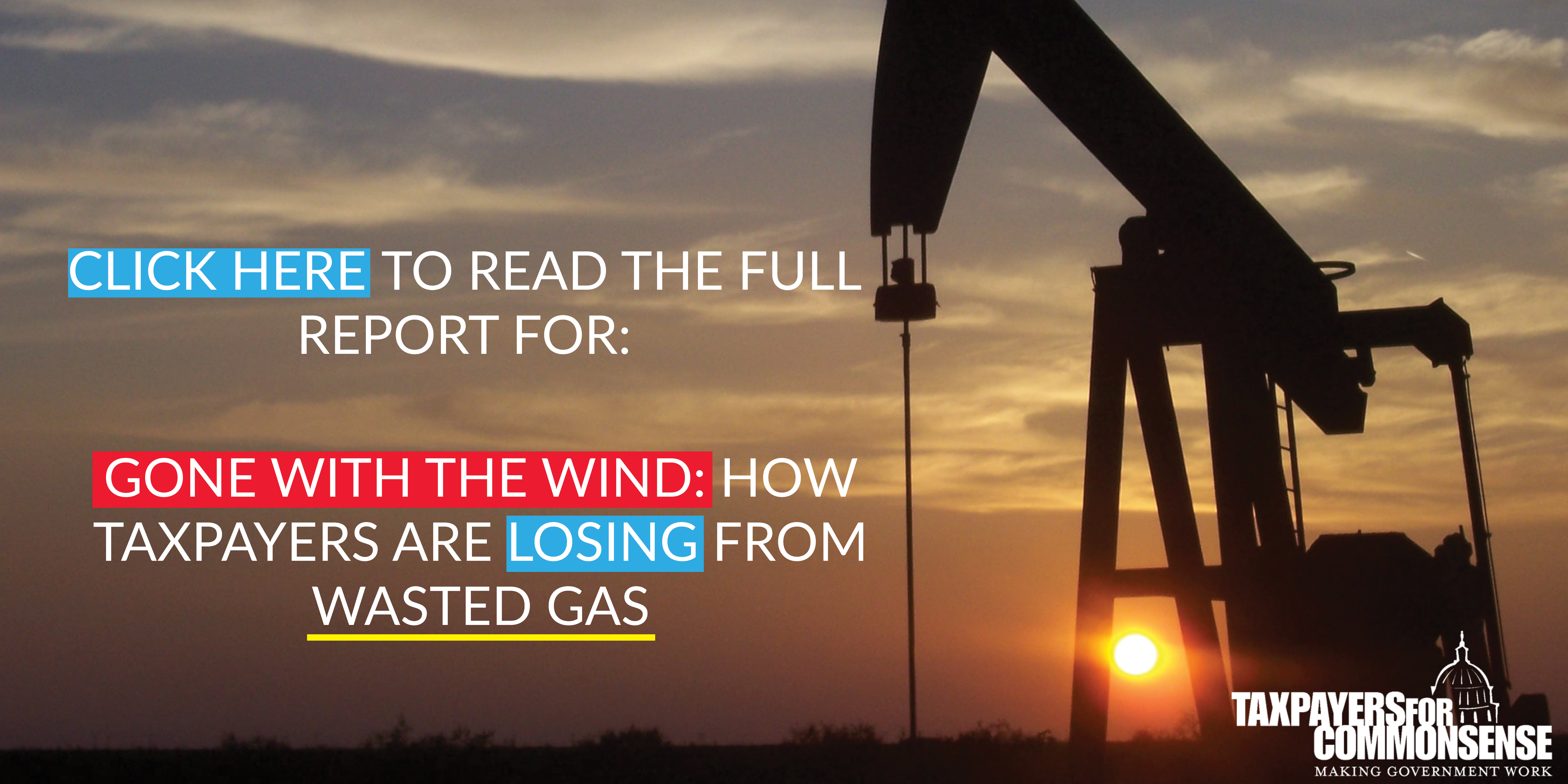Oil and gas companies drilling on federal lands are losing a significant amount of natural gas. In their drilling operations, they are consuming free-of-charge gas worth billions of dollars while some gas is also being leaked into the atmosphere from drilling equipment. Historically, these companies have paid royalties on only a tiny fraction of this lost gas, and the Department of the Interior (“DOI”) does not have a system to track those losses.
Summary of Findings
Taxpayers for Common Sense (“TCS”) requested information about the disposition of federal gas on onshore federal leases[1] from the Office of Natural Resource Revenue (“ONRR”), the DOI office that manages revenues owed for development of federal energy and natural resources. TCS analyzed the information in the context of recent revelations about data reporting and accounting lapses at the Bureau of Land Management (“BLM”). The results of that analysis presented in this report add to and update the 2014 TCS report, “Burning Money.” Here is what we found:
- The total amount of lost gas reported by oil and gas companies to DOI is significantly less than the amount of lost gas from the oil and gas operators recorded by the Environmental Protection Agency and non-government groups[2].
- BLM field offices often are inconsistent in applying and complying with department guidance when approving and categorizing flaring and venting activity.[3] This inconsistency has decreased the amount of revenue collected by the DOI because less lost gas is subject to royalties.
- According to ONRR data, the amount of natural gas “unavoidably” lost by oil and gas companies from venting and flaring operations was 10 times the amount “avoidably” lost from 2006 through 2015. The BLM does not require companies to pay royalties on unavoidably lost gas.
- Oil and gas companies reported the “unavoidable” loss of 171.8 billion cubic feet (“bcf”) of natural gas from federal lands from 2006 through 2015.
- At the average yearly price of natural gas, this lost gas had a market value of roughly $878.1 million dollars.
- Because this gas was “unavoidably” lost, no royalties were paid to taxpayers. If it had incurred a royalty of 12.5 percent,[4] it would have generated $109.8 million in royalty payments.
- During this period, these same companies reported the “avoidable” loss of 17.6 bcf of natural gas.
- At the average yearly price of natural gas, this lost gas had a market value of roughly $73.2 million dollars, and should have incurred a royalty of $9.2 million.
- Oil and gas operators reported the “beneficial use” of 711.8 bcf of natural gas to power their equipment on federal leases. Operators are allowed to consume this gas free-of-charge.
- At average yearly prices, this gas would have had a market value of $3.72 billion.
- No royalties are paid on this gas. If royalties were paid at the royalty rate of 12.5 percent, it would have generated $465.1 million in royalty payments.
Click here to download raw data.
[1] The data included in this report are limited to the federal mineral estate. The dataset does not include disposition of gas from Indian mineral rights or non-federal mineral rights. The BLM administers some leases that include more than one mineral estate, known as “mixed estate” leases. The data reflect only the natural gas volumes attributed to the federal share for these leases.
[2] Comparison of federal-only disposition values is difficult because most studies of methane losses from oil and gas production include non-federal gas. Even when adjusting aggregate data for only the federal share of total production, the amount of estimated lost gas is higher in most studies than what is reported by industry to ONRR.
[3] U.S. Government Accountability Office, “Interior Could Do More to Account for and Manage Natural Gas Emissions,” GAO-16-607, Report to Congressional Requesters, July 2016.
[4] Federal lessees pay royalties to the federal government for the right to mine and sell publicly owned resources. The royalty rate for onshore natural gas is 12.5 percent of the sale price.











